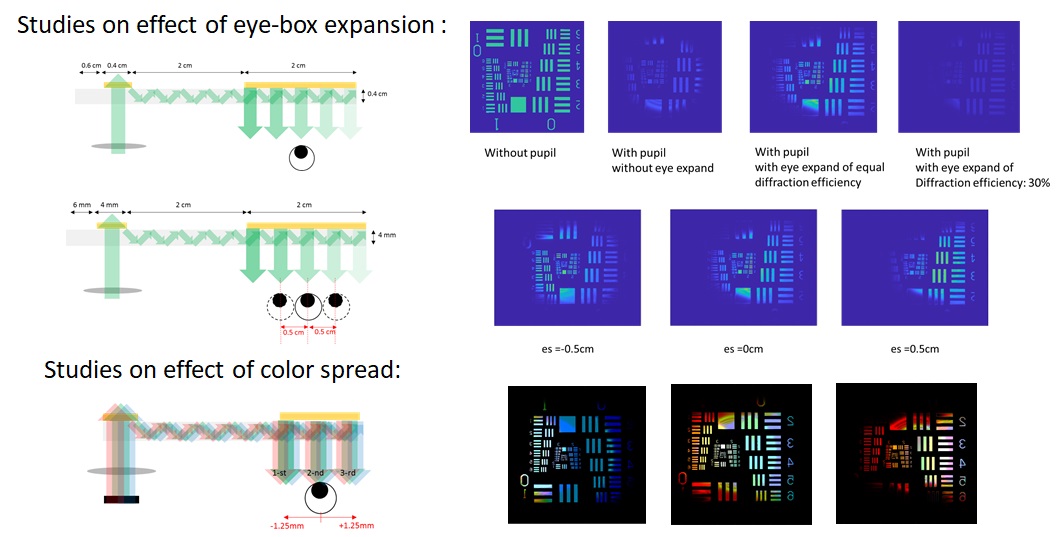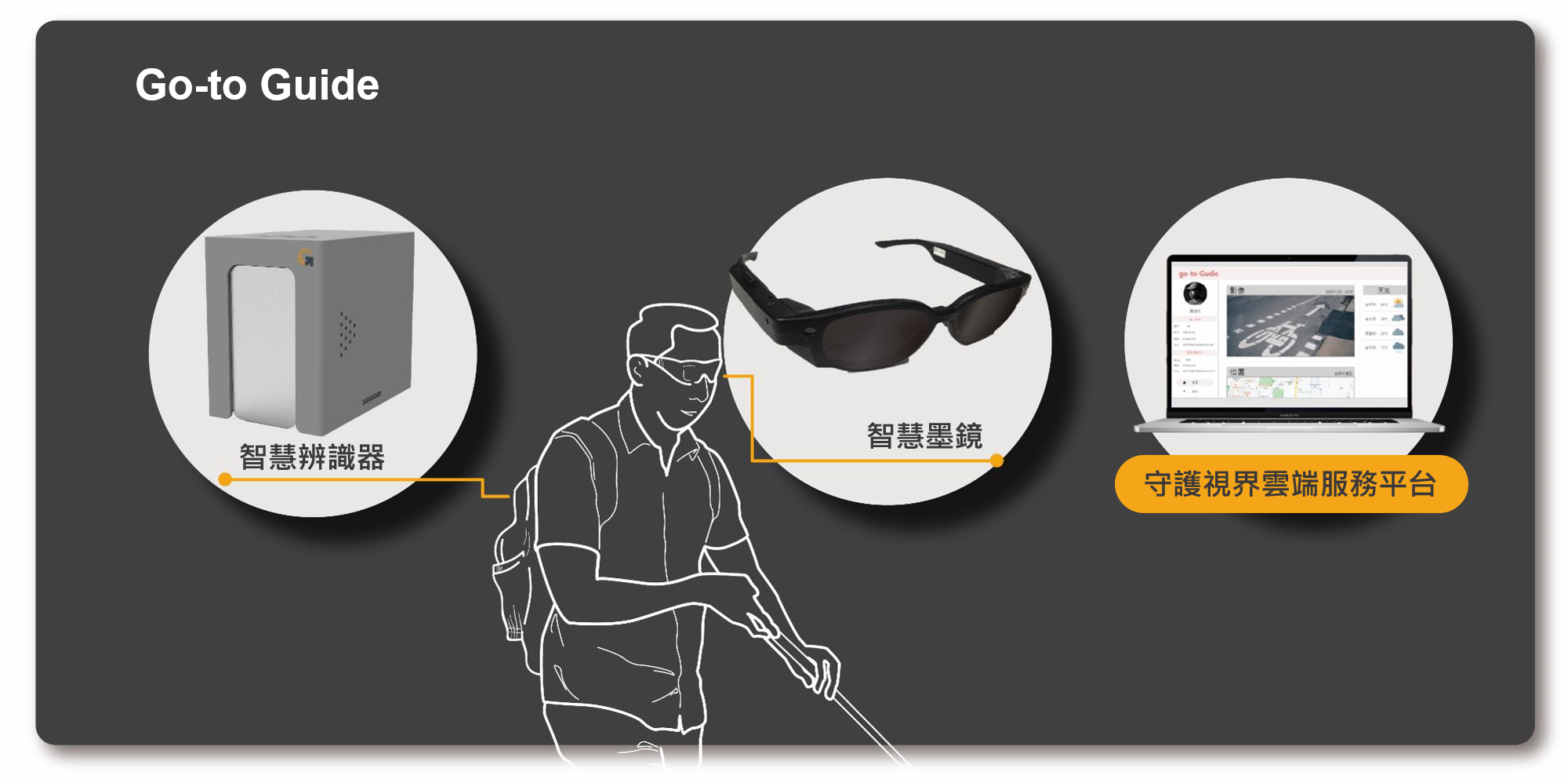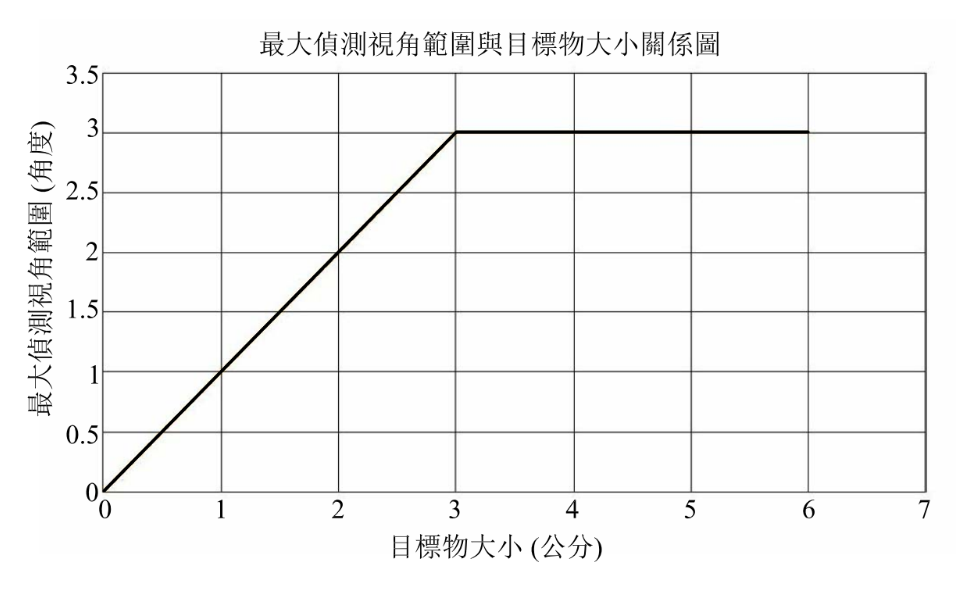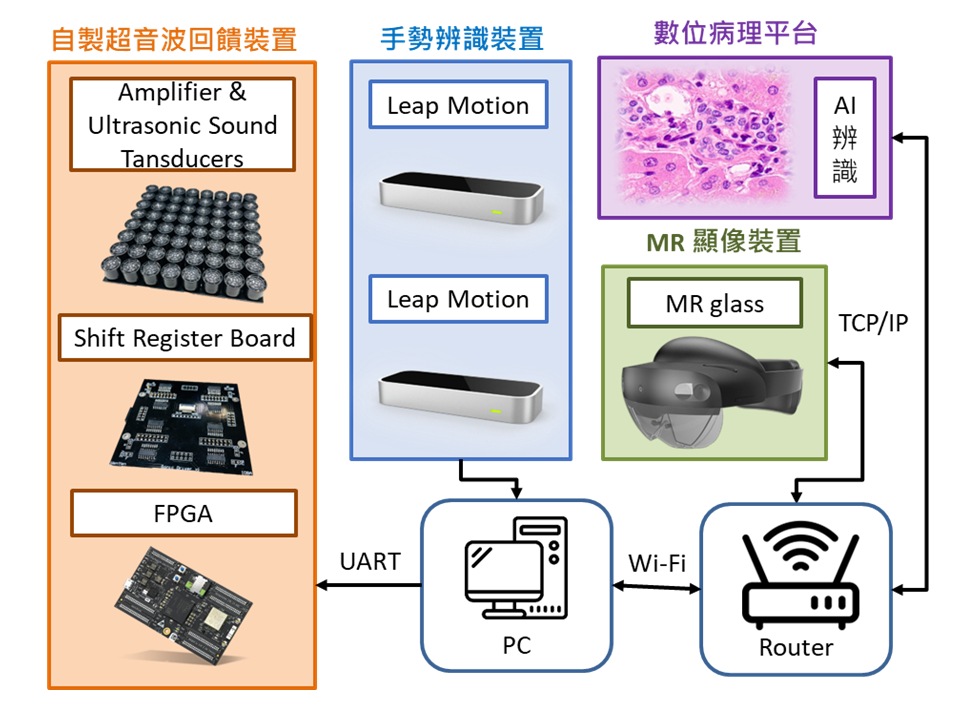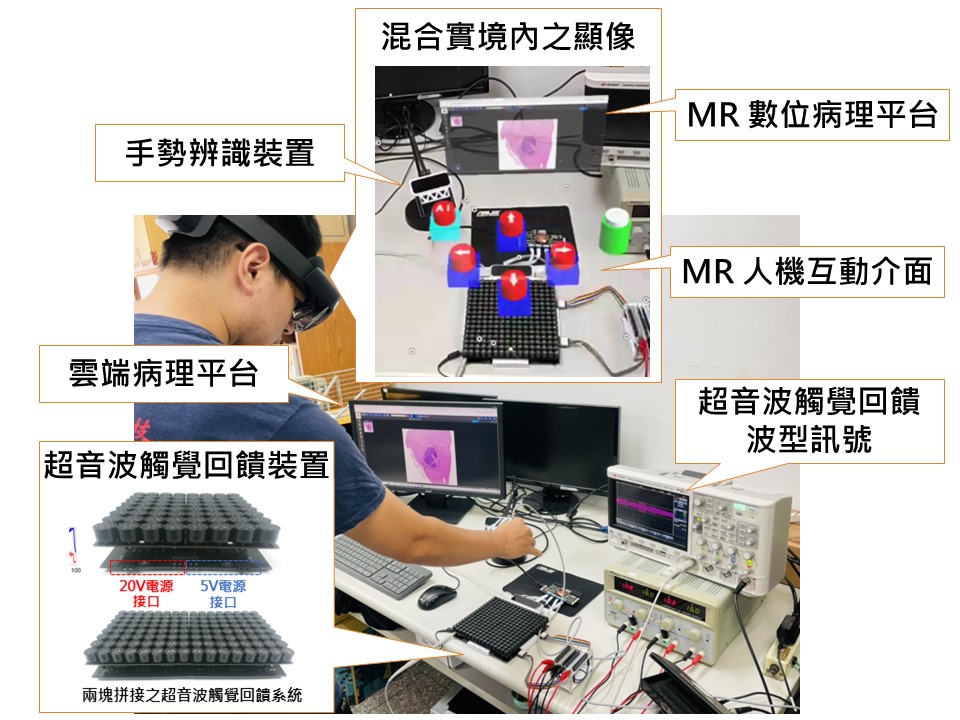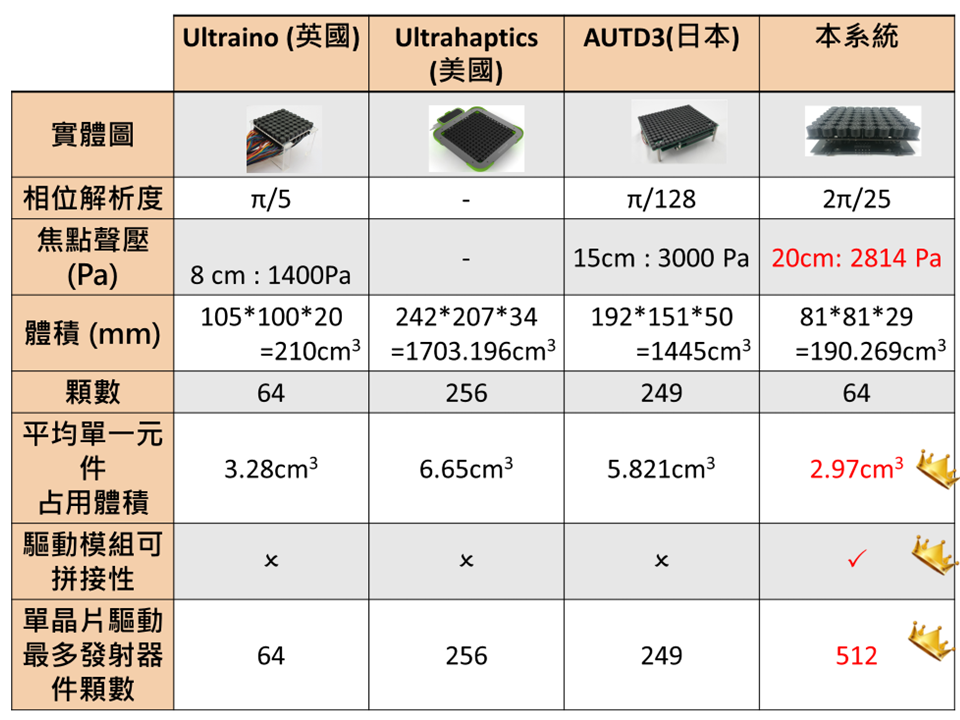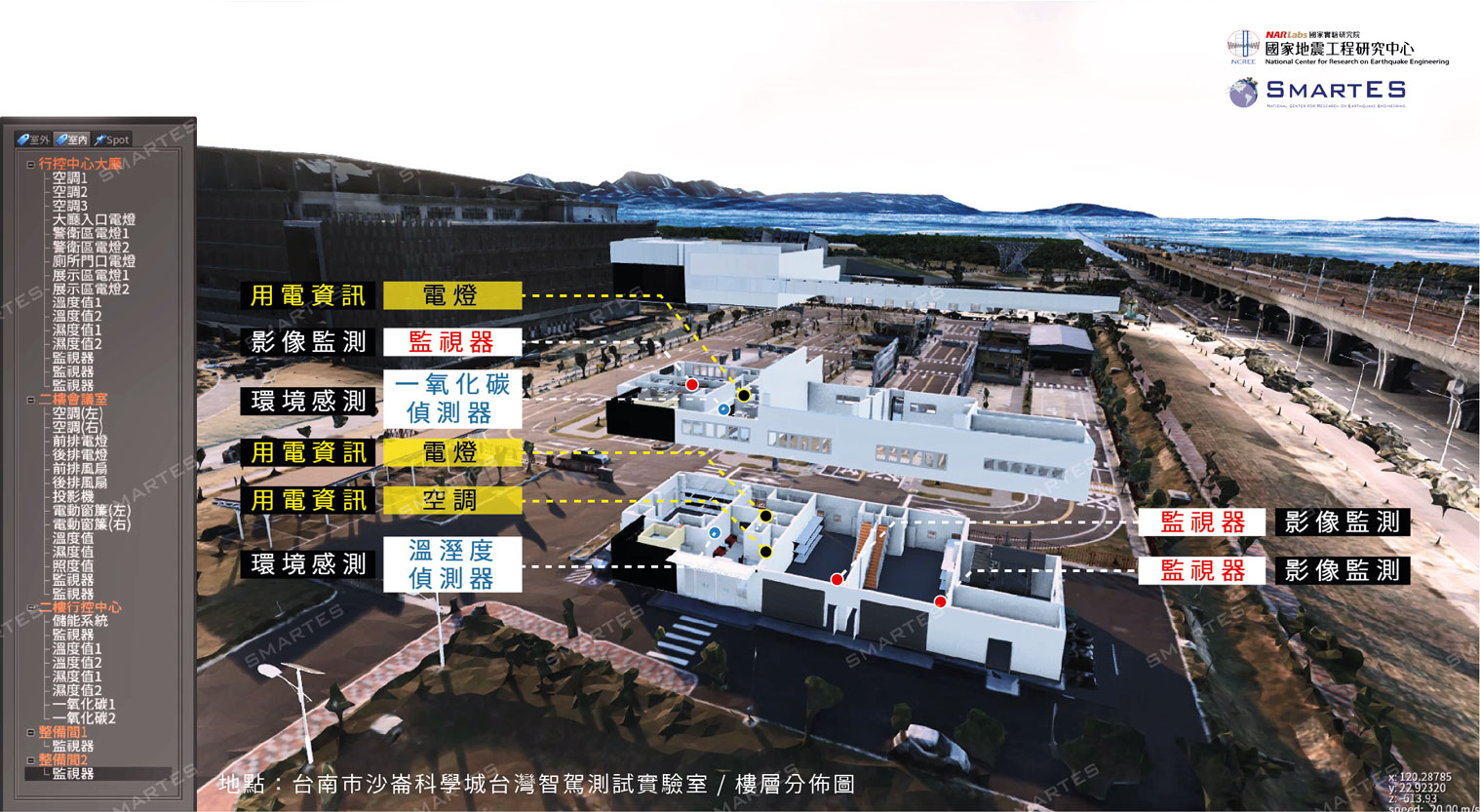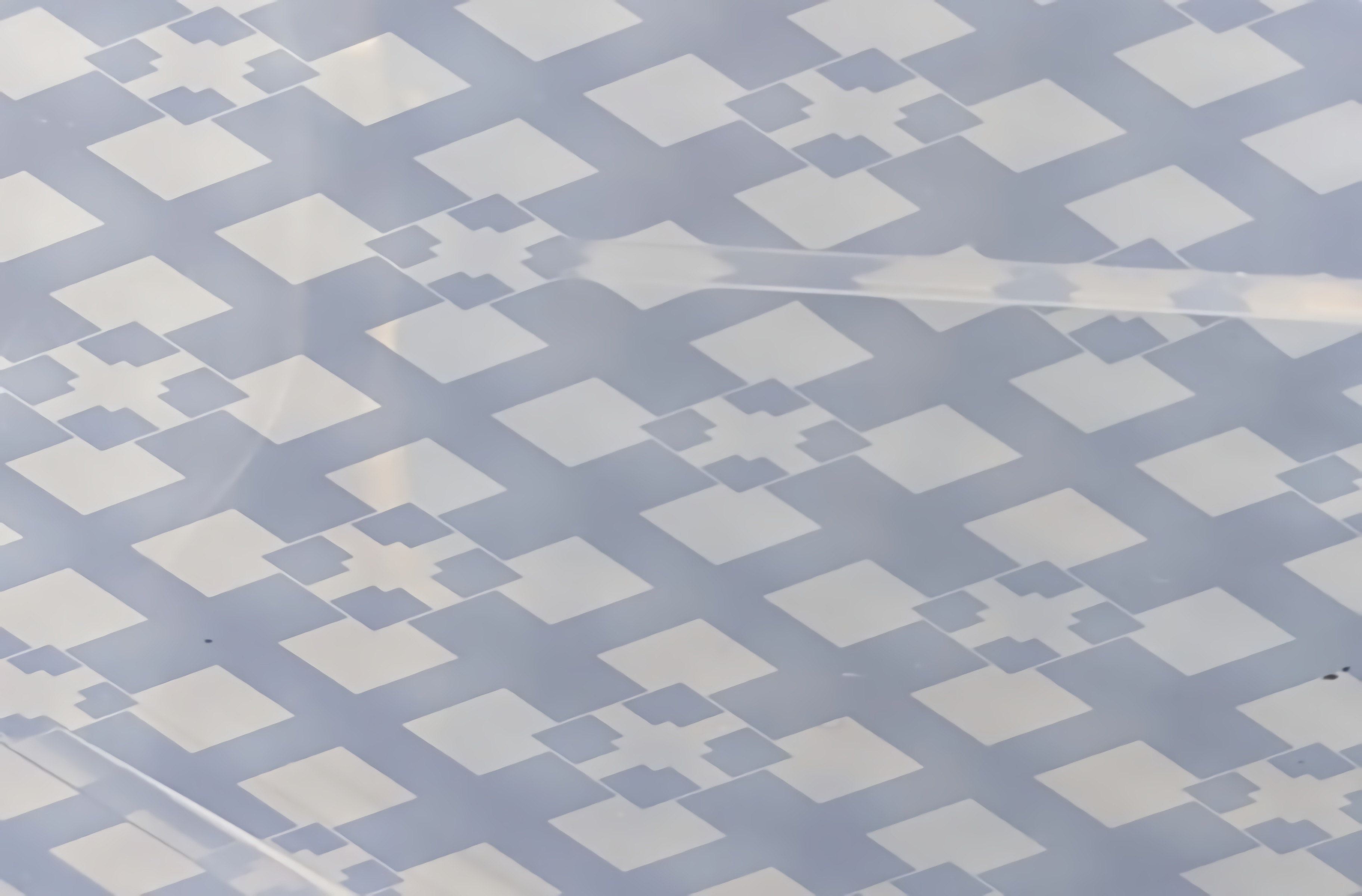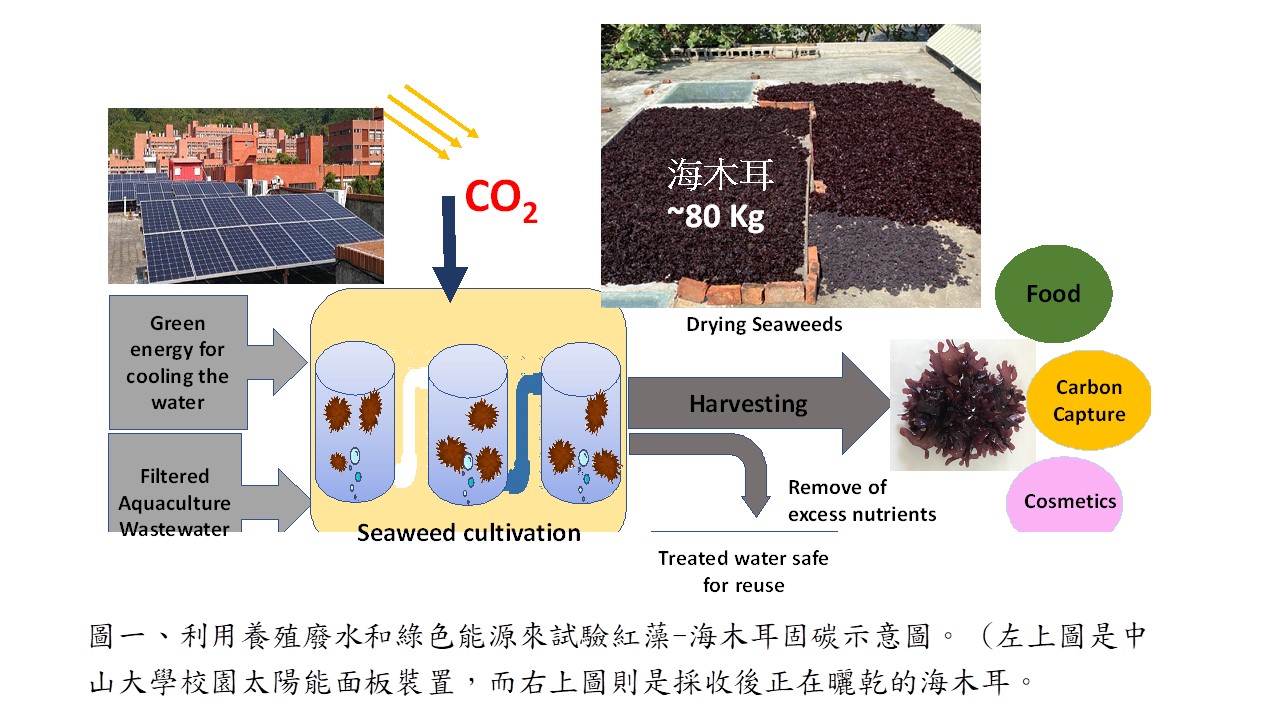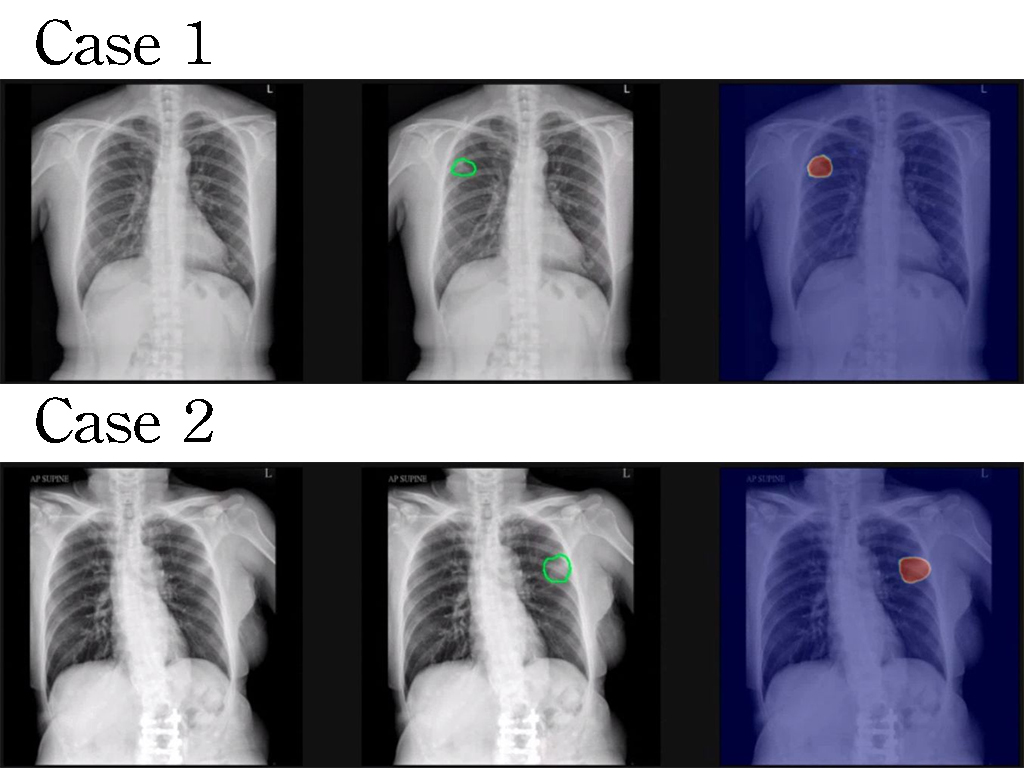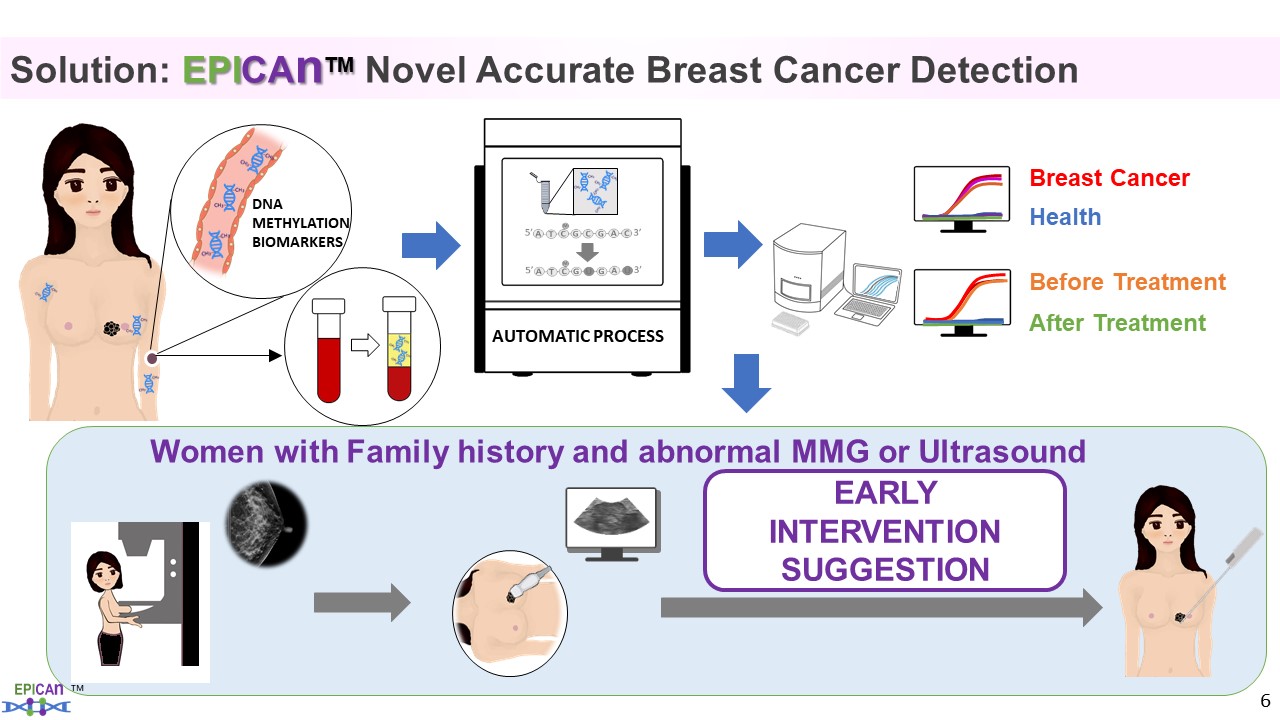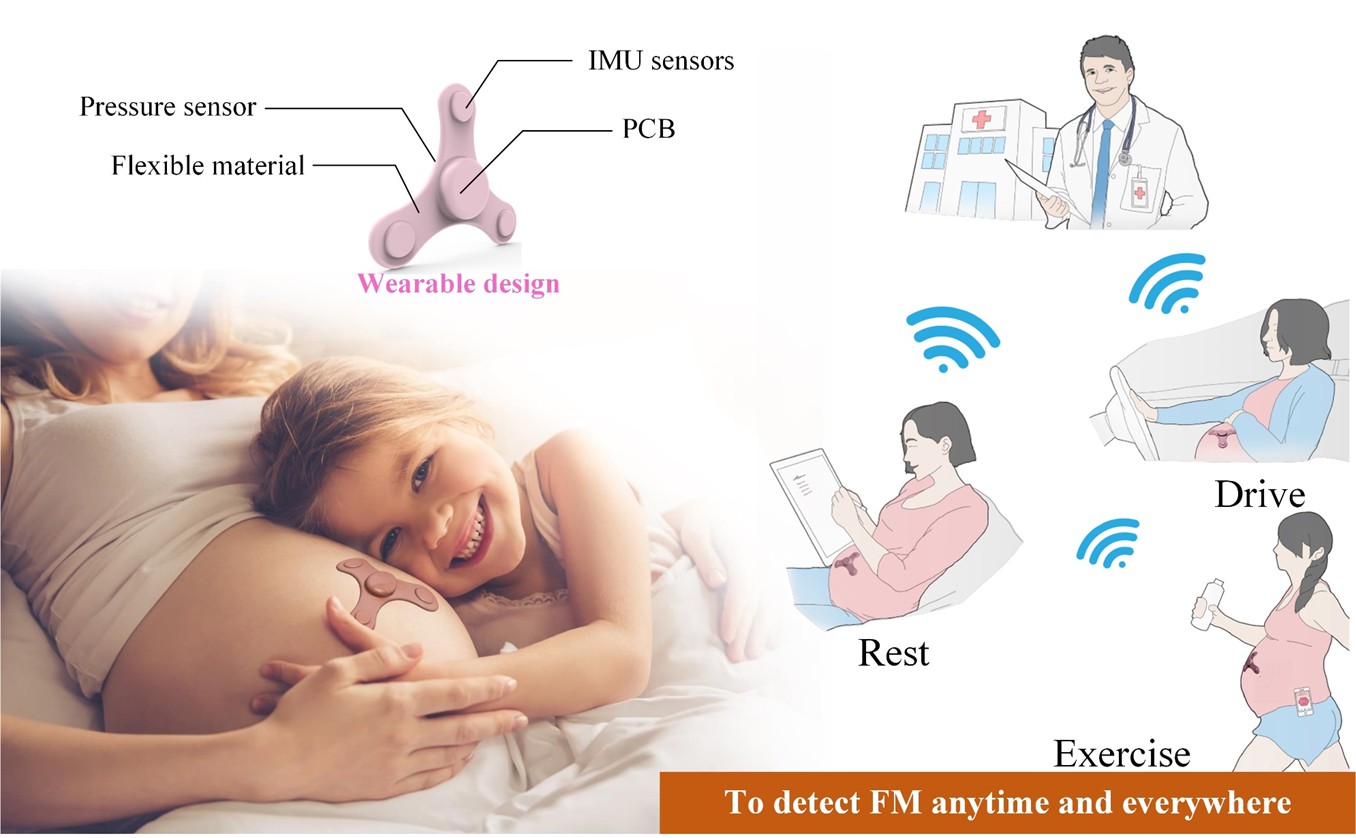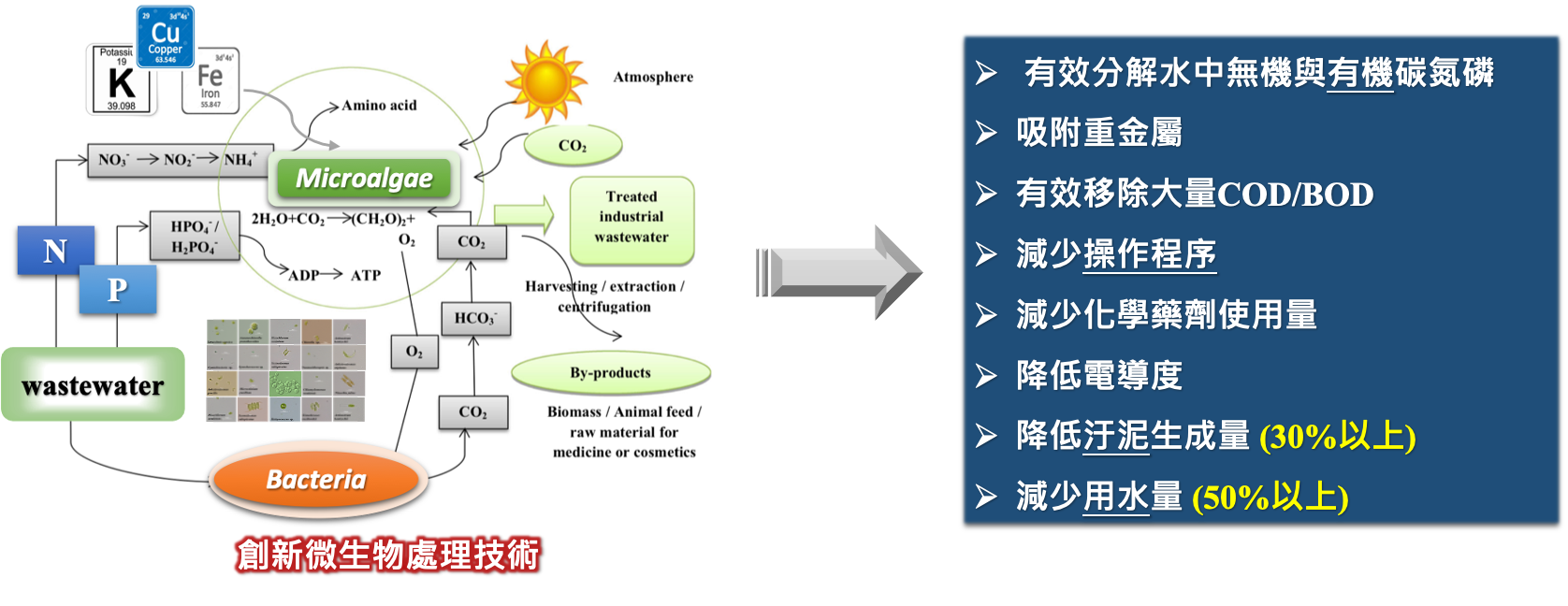| Technical Name |
Ultrasonic hapticartificial intelligence based non-contact interaction pathology system |
| Project Operator |
National Cheng Kung University |
| Project Host |
林志隆 |
| Summary |
The “Ultrasonic HapticArtificial Intelligence Based Non-Contact Interaction Pathology System” implements the MR glasses to visualize the non-contact control interface which is manipulated by the gestures of people to browse the pathological images. To improve the accuracy of controlthe usability of the proposed system, the self-developed ultrasonic haptic feedback system is utilized to diminish the cognitive bias from MR glasses. The proposed system combined with the artificial intelligence pathological analysis models to discriminate lesions assists doctors in elevating the pathological analysisdiagnostic efficiency. |
| Scientific Breakthrough |
Compared with the current digital pathology platform, this system can use MR glasses for imaging,introduce ultrasonic haptic feedback technology to provide a noncontact control system, which can prevent the infection by touch. The system control is intuitivehave a higher degree of freedom to import into application. In addition, compared to other pathology platforms, our AI pathology analysis platform can more accurately detectsegment the lesion regions of liver tumors. The AI analysis results can assist doctors to diagnose liver diseases. |
| Industrial Applicability |
The proposed system is suitable for compact car interior spacesprovides the drivers with unbounded gesture controla tactile multimedia experience due to its small sizeability of custom splice. In the medical field, this system can help the surgeon control instruments preciselynon-contact to avoid infection.
In addition, there is a blooming digital pathology analysis market for liver cancer, which commonly occurs in Asia. However, pathological AI analysis systems for liver cancer scarcely exist. Therefore, our system has large marketing potential with our leading technology in AI analysis for liver cancer. |
| Keyword |
Digital Pathology Platform Ultrasound Haptic Feedback Technology Mixed Reality Non-Contact Human-Machine Interface Artificial Intelligence Digital Pathology Image Analysis Deep Learning Gesture Recognition Modular Hardware Cloud Database |

